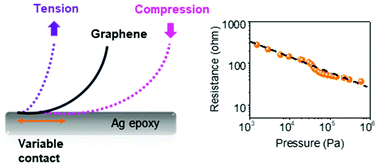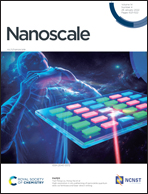Contact resistance based tactile sensor using covalently cross-linked graphene aerogels†
Abstract
A movable electrical contact between two materials is one of the most fundamental, simple, and common components in electronics that is used for binary control of a conducting path in an electrical circuit. Here, variable contact resistance between a highly elastic graphene aerogel and a rigid metal electrode is used for the analysis of non-binary pushing and pulling mechanical forces acting on the contact, enabling superior strain and pressure measurements. The variable contact resistance based electromechanical sensors demonstrate superfast, ultrasensitive and quantitative measurements of compressive and tensile stress from −1.18 MPa to 0.55 MPa. The sensors can operate over the temperature range of −60 to 100 °C, cover the whole skin and human motion range, and determine the weight of a grasped object. The measurement of such high forces has only been possible due to the high-temperature induced covalent cross-linking of graphene in the aerogel that provides high strength, durability, and fast response (<0.5 ms) to the sensing element. The study demonstrates the great potential of the contact resistance-controlled sensing, which enables high-precision and reliable measurement of strain and pressure over a remarkable large sensing range, providing new opportunities for applications in human–machine interfaces, robotics, flexible electronics, and haptic technology.



 Please wait while we load your content...
Please wait while we load your content...